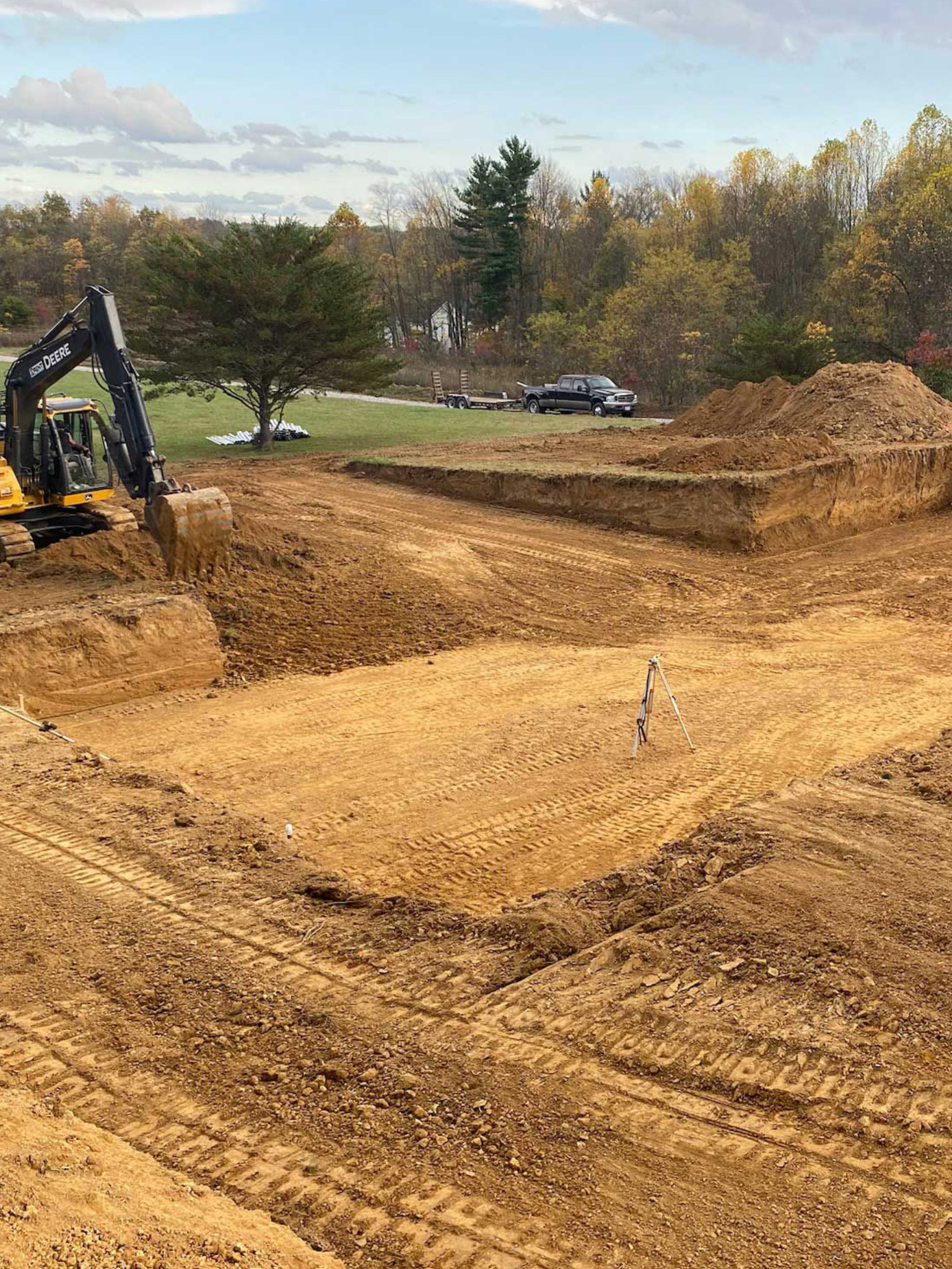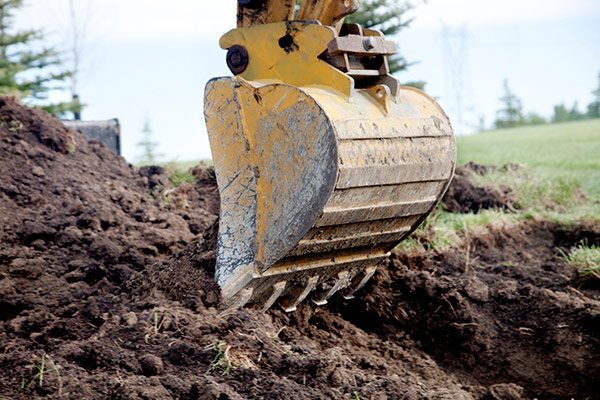Commercial Lancaster Trenching - Trenching Services for Businesses in Lancaster
Commercial Lancaster Trenching - Trenching Services for Businesses in Lancaster
Blog Article
Revealing the Art of Excavation: Pro Tips for Safe and Efficient Digging
As dirt is turned and earth is relocated, the intricacies of excavation expose themselves, demanding a keen understanding of tools, soil make-up, safety and security procedures, and environmental factors to consider. The expertise needed to browse these components successfully can indicate the distinction in between an effective excavation task and a possible catastrophe.
Value of Proper Tools
To make certain the safety and performance of any kind of excavation project, making use of the ideal devices is critical. The right devices not just boost performance however likewise minimize dangers associated with digging. Excavation tasks differ in scope and intricacy, varying from tiny domestic landscaping jobs to large-scale building and construction endeavors. No matter the project dimension, having the correct devices can make a considerable difference in the result.
Excavators are essential pieces of machinery in any digging operation. These functional makers can be found in numerous dimensions to suit different task demands. Tiny excavators are suitable for smaller sized jobs, while larger excavators deal with more comprehensive jobs efficiently. Backhoes are one more important devices kind, incorporating the functions of a loader and an excavator in one equipment. They are important for tasks requiring flexibility and ability to move.
Excavators succeed in tasks that require pressing huge quantities of soil or debris. By investing in the ideal equipment, excavation projects can be completed securely, on time, and with accuracy.
Understanding Dirt Structure
A thorough understanding of soil composition is fundamental for executing excavation projects with precision and safety. Comprehending the different kinds of dirt is critical as it directly affects excavation approaches, equipment choice, and overall job performance. Soil composition normally contains 4 major parts: sand, silt, clay, and raw material. Each part has special properties that affect exactly how soil reacts to excavation procedures.
Sand bits are the biggest and offer good drain but use little cohesion. Silt particles are smaller than sand but bigger than clay, supplying modest drain and cohesion. Clay fragments are the smallest and offer high cohesion however poor drainage. Organic matter, such as rotting plant product, influences dirt fertility and stability.
Prior to commencing excavation, conducting soil tests to establish its make-up and attributes is vital. This information helps in picking the proper equipment, implementing safety actions, and creating excavation approaches tailored to the specific dirt conditions - dump truck companies in ohio. By comprehending dirt composition, excavation experts can enhance job outcomes while ensuring security and adherence to finest practices
Precaution and Protocols
Recognizing dirt structure is the foundation whereupon precaution and procedures for excavation projects are constructed, guaranteeing the well-being of employees and the success of the undertaking. There are several essential procedures that have to be carried out to minimize dangers and protect against accidents. when it comes to security during excavation.
Most importantly, prior to any kind of digging begins, a detailed assessment of the site must be performed to identify any prospective hazards such as underground utilities, unpredictable soil problems, or close-by structures that might present a threat. It is important to have a competent individual look after the excavation process to guarantee that all safety and security protocols are followed strictly.
In addition, all employees included in the excavation needs to be appropriately trained in risk-free digging practices and the appropriate operation of equipment. By adhering to these safety and security steps and protocols, excavation jobs can be finished effectively and without case.
Reliable Excavation Preparation
When starting an excavation project, meticulous preparation is crucial to make certain performance, security, and effective results. Efficient excavation preparation includes numerous key steps that are crucial for the smooth implementation browse around this site of the job. The initial step is to perform an extensive site evaluation to determine any potential threats, such as underground energies or unpredictable soil conditions. This info is important for developing a comprehensive excavation strategy that includes safety procedures and run the risk of mitigation approaches.
When the site analysis is complete, the following step is to develop a clear timeline and schedule for the excavation activities. This consists of establishing the series of jobs, devices requirements, and manpower appropriation. Appropriate organizing Full Report assists prevent delays and makes certain that the project stays on track.

Moreover, communication amongst all group participants is critical throughout the preparation stage. Clear directives, normal updates, and reliable coordination are necessary for an effective excavation job. By investing time and effort in meticulous planning, excavation teams can significantly enhance efficiency, decrease dangers, and achieve successful end results.

Managing Ecological Factors To Consider
With enhancing focus on ecological sustainability in building and construction techniques, managing environmental factors to consider has come to be a crucial element of excavation projects. Excavation tasks have the prospective to affect the surrounding setting through soil erosion, debris overflow, environment interruption, and contamination of water resources. To alleviate these threats, it is essential to execute ideal methods that prioritize environmental management.

In addition, appropriate waste management is critical to prevent soil and water contamination. Implementing treatments for the disposal of unsafe products, recycling of waste materials, and decreasing the usage of unsafe chemicals can substantially decrease the environmental impact of excavation projects. By incorporating these techniques right into excavation preparation and execution, construction companies can guarantee that their projects are not only secure and productive yet likewise environmentally liable.
Final Thought
Finally, grasping the art of excavation requires an extensive understanding of proper devices, dirt composition, safety and security procedures, and efficient planning. By adhering to these guidelines and considering environmental variables, excavations can be conducted safely and successfully. It is important to prioritize security and performance in every excavating task to guarantee successful results.
As soil is turned and earth is moved, the intricacies of excavation expose themselves, demanding an eager understanding of devices, dirt make-up, safety methods, and environmental factors to consider.To ensure the safety and security and performance of any type of excavation job, making use of the appropriate devices is vital.A detailed grasp of dirt structure is essential for executing excavation jobs with precision and safety and security. Recognizing the various types of soil is important as it straight affects find excavation methods, tools option, and overall task efficiency. By recognizing soil structure, excavation experts can boost task results while making sure security and adherence to finest methods.
Report this page